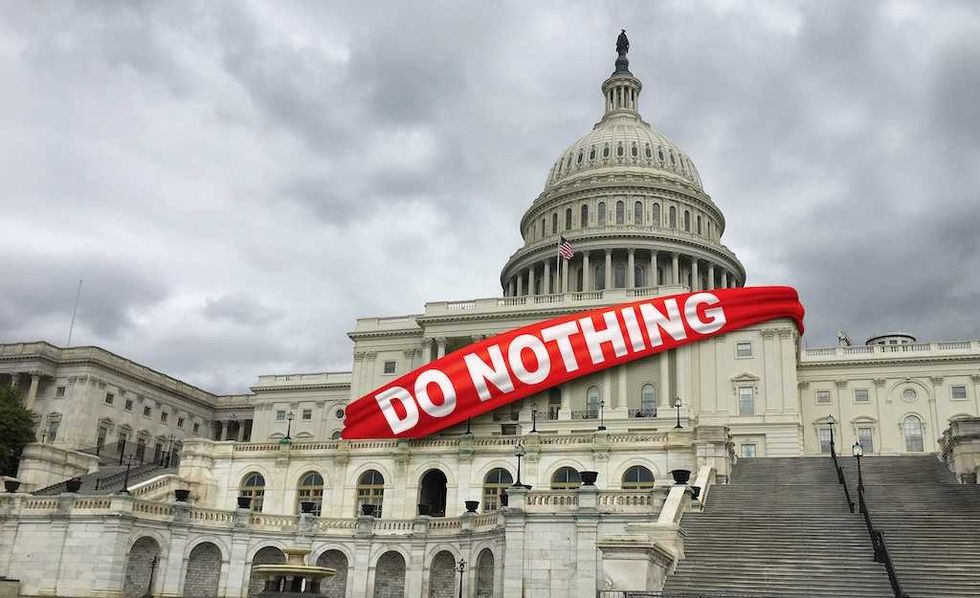
www.theblaze.com
How the Senate’s phony ‘deliberation’ crushes working Americans
The United States Senate is broken, and most Americans know it — including President Donald Trump. A chamber that once passed laws with a simple 51-vote majority, a practice that held for more than a century, now demands 60 votes for nearly anything of consequence.Defenders call this the “world’s greatest deliberative body,” guarding minority rights. In reality, the 60-vote threshold is a rule the Senate invented in the last century — and one it can discard tomorrow.The filibuster transformed from a test of stamina into a tool for avoiding hard votes — and, today, a convenient excuse to delay or kill the America First agenda.Article I lists exactly seven situations that require a supermajority: overriding vetoes, ratifying treaties, convicting in impeachment, expelling members, proposing constitutional amendments, and two obscure quorum rules. Passing ordinary legislation is not on the list.The Senate’s tradition of unlimited debate — the seed of modern filibusters — wasn’t designed to create a supermajority requirement. It was an accident.In 1806, on Aaron Burr’s suggestion that the Senate rulebook was cluttered, the chamber deleted the “previous question” motion, the mechanism the House still uses to end debate and vote. No one understood the implications at the time. Filibusters didn’t appear until the 1830s, and even then they were rare because they required real endurance. Senators had to speak nonstop, often for days, until they collapsed or yielded.How the filibuster became a weaponEverything changed in 1917. After 11 anti-war senators filibustered Woodrow Wilson’s bill to arm merchant ships on the eve of World War I, the public revolted. Wilson demanded action. The Senate responded by creating Rule XXII — the first cloture rule — allowing two-thirds of senators to end debate.Instead of restraining obstruction, the rule supercharged it. For the first time, a minority didn’t need to speak until exhaustion. They only needed to threaten it. The majority now had to assemble a supermajority to progress.The filibuster transformed from a test of stamina into a tool for avoiding hard votes — and, today, a convenient excuse to delay or kill the America First agenda.The Senate has rewritten its filibuster rule many times since. In 1975, it lowered the cloture threshold from two-thirds to three-fifths (60 votes). In 2013, Democrats eliminated the filibuster for most presidential nominees; in 2017, Republicans applied that same exception to Supreme Court justices.These changes all point to the same reality: The filibuster is not a sacred tradition. It is a standing rule, created and amended by simple-majority votes. The Senate can change it again any time.The myth of ‘unprecedented change’Filibuster defenders insist that ending the 60-vote rule would be radical.It wouldn’t. In reality, it would restore the practice that governed the Senate for its first 128 years — unlimited debate, yes, but no supermajority threshold for passing laws.RELATED: Democrats reject ‘current policy’ — unless it pays their base DOUGBERRY via iStock/Getty ImagesDefenders also claim the filibuster forces compromise. History says otherwise. The biggest legislative achievements of the last century — Social Security, the Civil Rights Act, the Tax Cuts and Jobs Act — all passed when the filibuster was weakened, bypassed, or irrelevant.What we have now is not deliberation. It is paralysis: a rule that allows 41 senators, representing as little as 11% of the country, to veto the will of the rest. The Senate already protects small states through equal representation and long tenures. Adding a 60-vote requirement for routine governance is not what the framers intended.The fixThe solution is straightforward. The Senate can return to simple-majority voting for legislation. It can keep unlimited debate if it wishes — but require a real talking filibuster that ends when the minority runs out of arguments or public patience. Or it can leave the system as it is now and watch President Trump’s America First agenda stall for another generation.The filibuster is not a 230-year constitutional safeguard. It is a 108-year experiment born in 1917 — and it has failed. The Senate invented it. The Senate can un-invent it.










